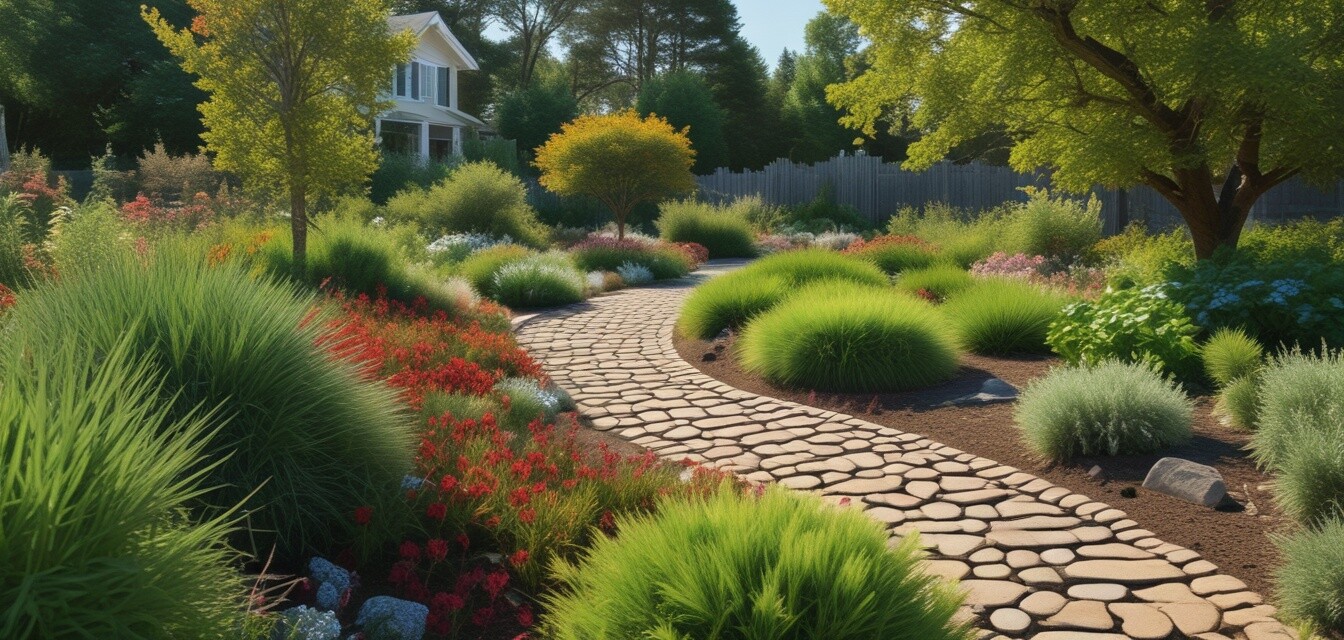
The future of landscaping: Sustainable practices
Key Takeaways
- Sustainable landscaping focuses on eco-friendly practices that enhance the natural environment.
- Key practices include water conservation, soil management, and the use of native plants.
- Innovative tools and technologies are making sustainable landscaping more accessible.
- Adopting these practices can improve property value and reduce maintenance costs.
- Community involvement and education are essential for widespread adoption of sustainable practices.
As our society becomes increasingly aware of the environmental impacts of traditional landscaping practices, the shift towards sustainable landscaping is accelerating. Gardeners, landscapers, and homeowners are embracing new techniques and technologies that benefit the planet while creating stunning outdoor spaces. In this article, we will explore the latest sustainable practices in landscaping and the benefits they bring.
What is sustainable landscaping?
Sustainable landscaping is an approach that incorporates ecological principles into the design and maintenance of landscapes. It seeks to create beautiful outdoor environments while minimizing environmental impact. Key components of sustainable landscaping include:
- Using native plants that require less water and maintenance.
- Implementing natural pest management strategies.
- Enhancing soil health through organic practices and composting.
- Employing water-efficient irrigation systems.
Benefits of sustainable landscaping
| Benefit | Description |
|---|---|
| Reduced water usage | By selecting drought-resistant plants and utilizing efficient irrigation systems, water consumption can be significantly lowered. |
| Lower maintenance costs | Native plants and organic practices can reduce the need for chemical fertilizers and pesticides, leading to lower overall maintenance expenses. |
| Enhanced biodiversity | Creating habitats for wildlife encourages pollinators and beneficial insects, which are essential for a healthy ecosystem. |
| Improved aesthetics | Sustainable landscapes often feature more vibrant and diverse plant life, which enhances the visual appeal of outdoor spaces. |
Innovative sustainable landscaping practices on the rise
New technologies and methods are emerging to revolutionize the landscaping industry, making sustainability more attainable. Here are some of those practices:
1. Rain gardens
Rain gardens are designed to capture and absorb rainwater runoff, reducing erosion and improving water quality. These gardens utilize native plants to thrive in the unique soil conditions created by stormwater.
2. Permeable pavements
Permeable or porous pavements allow rainwater to infiltrate the ground rather than running off into storm drains. This practice aids in groundwater recharge and decreases urban flooding.
3. Vertical gardens
Vertical gardens or living walls not only add beauty to urban environments but also improve air quality and provide insulation for buildings. They often use a variety of plant species to create lush, green walls.
4. Smart irrigation systems
Advancements in irrigation technology allow for the use of weather data and moisture sensors to optimize water usage. These smart systems help reduce waste by ensuring that plants receive the right amount of water at the right time.
5. Edible landscaping
Incorporating edible plants into your landscape not only beautifies your yard but also provides fresh produce. This practice promotes self-sufficiency and reduces the carbon footprint associated with grocery shopping.
The role of community in sustainable landscaping
Community involvement is vital for successfully implementing sustainable landscaping practices. Education and collaboration among local groups can foster awareness and encourage individual action. Resources such as workshops, local gardening clubs, and online forums help gardeners share knowledge and best practices.
Getting started with sustainable landscaping
Tips for beginners
- Start by assessing your current landscape, noting areas where eco-friendly changes can be made.
- Choose native plants suited for your region to minimize water and maintenance requirements.
- Research and implement rainwater harvesting techniques to maximize water efficiency.
- Engage with local gardening clubs to learn from experienced gardeners who adopt sustainable practices.
Conclusion
The future of landscaping is undoubtedly leaning towards sustainable practices that not only enhance the beauty of outdoor spaces but also nurture the environment. By prioritizing eco-friendly methods, we can contribute to a healthier planet while enjoying the many benefits that come with it.
Pros
- Environmentally friendly approach
- Lower maintenance and water costs
- Increased biodiversity
- Attractive and vibrant outdoor spaces
Cons
- Initial investment can be higher
- Requires more planning and research
- Longer time for plants to establish
For more information on sustainable approaches or to explore our selection of premium gardening tools and materials, visit our Eco-Friendly Fertilizers section. For those interested in garden design, be sure to check our Garden Tools offerings as well.
Stay informed about the latest trends in sustainable landscaping by exploring our News and Trends blog category, where we delve into the most cutting-edge practices and tools transforming the gardening industry.